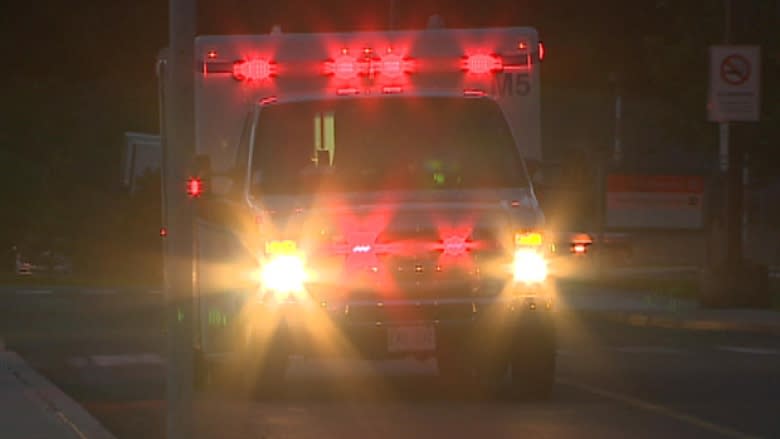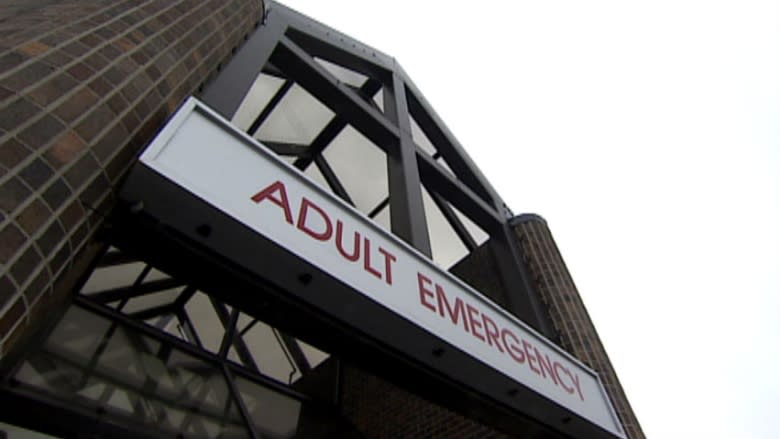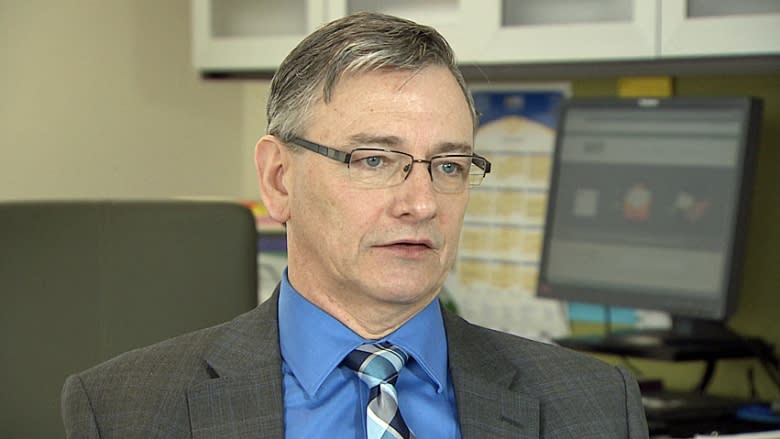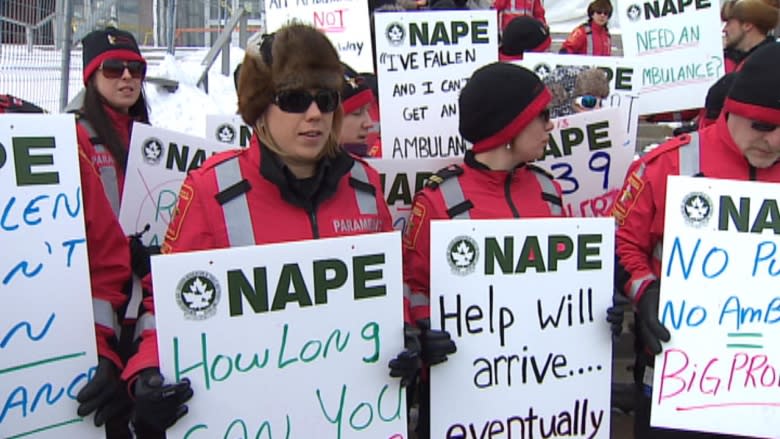NAPE wants 'immediate action' to reduce ambulance red alerts
The province's largest public sector union is calling for "immediate action" to address the number of red alerts affecting ambulance services in the metro St. John's area.
The Newfoundland and Labrador Association of Public and Private Employees (NAPE) says government hasn't followed through with all of the recommendations in a consultant's report to boost resources in the system.
"While there has been a reduction since 2015 in the number of red alerts, our members and our union are still concerned about where we stand on this critical matter," NAPE president Jerry Earle said.
"This is a service where every second counts. Every red alert is a situation that could mean life or death. The goal must be zero red alerts. The government and Eastern Health have to provide the resources available to allow our members to make that goal a reality."
The Department of Health steered inquiries to Eastern Health.
In an emailed statement, the health authority said it has implemented some of the recommendations in that report.
That includes adding two new ambulances and eight new paramedics.
Eastern Health said red alerts are down by 35 per cent since then.
No available ambulance on standby
Red alerts happen when there is no Eastern Health ambulance on standby, immediately available to respond to a call.
There are two categories of red alert:
- Level 1, when there is a call, or calls, waiting for response.
- Level 2, when there is no call waiting.
According to NAPE, there were 372 red alerts in the area serviced by the Health Sciences Metro Ambulance Service in 2016 alone — roughly one per day.
More than half of those red alerts were Level 1 incidents, split nearly evenly between non-emergency and emergency calls.
"The last quarter of 2016, the last three months, there were over 60 occurrences when there was no ambulance, and calls waiting," Earle said.
"It could be for a child, it could be a serious motor vehicle (accident), it could be a cardiac event. That is unacceptable when a report made recommendations that could have diminished or eliminated this."
Consultant's report recommended changes
A consultant's report released in the fall of 2015 concluded that there were too few ambulances and paramedics in the system.
Pomax Consulting Inc. said 25 new paramedics were needed to meet the demand.
In response, Eastern Health announced plans to add two full-time ambulances and roughly eight paramedic positions.
But Earle said other recommendations — to further increase the number of paramedics and replace ambulances — have stalled.
"You would expect the recommendations to be implemented, rather than sit and collect dust," Earle told CBC News.
"This is people's lives we're talking about. This is people that were (having) potential significant medical events we're talking about. That when they call, an ambulance may not be available."
More ambulance hours added
But Eastern Health stressed that two new ambulances and eight new paramedics resulted in an additional 164 hours of ambulances in the city per week.
In a prepared statement, the authority noted that those resources were "strategically placed on hours of highest need."
According to Eastern Health, this represents 46 per cent of recommended resources.
The health authority noted that other positions have been added — a logistics technician to support the paramedic team, along with an additional operations supervisor to support and oversee all operations.
Numbers up and down over the years
The frequency and duration of ambulance red alerts has swung up and down over the years.
Eastern Health logged more than 14,000 red alert minutes in 2010-11. The next fiscal year, that number dropped to under 6,000.
That big decrease in red alert minutes coincided with an infusion of new resources — hiring more paramedics, buying three new ambulances and increasing the number of vehicles on the road, and opening two new satellite ambulance stations to aid response times.
In 2013, a CBC News investigation revealed that red alerts were climbing again.
In the wake of that story, the then-health minister, Susan Sullivan said the acceptable number of red alerts at Eastern Health is "zero," although she downplayed their significance.
Some red alerts last just minutes. Others last longer.
And ambulances can be redeployed to handle more critical calls.
According to NAPE, the number of red alert minutes rose back to more than 12,500 in 2014-15.
The number for 2016 is roughly 7,500 minutes, or about 20 minutes per day on average.
"It's unacceptable if a parent picks up that phone and calls for an ambulance for their child, or you or I pick up and call for a significant other or a spouse, that we may be told there is no ambulance available," Earle said.
"Obviously some people were told last year there was no ambulance available. That is not acceptable at the level it is occurring."










